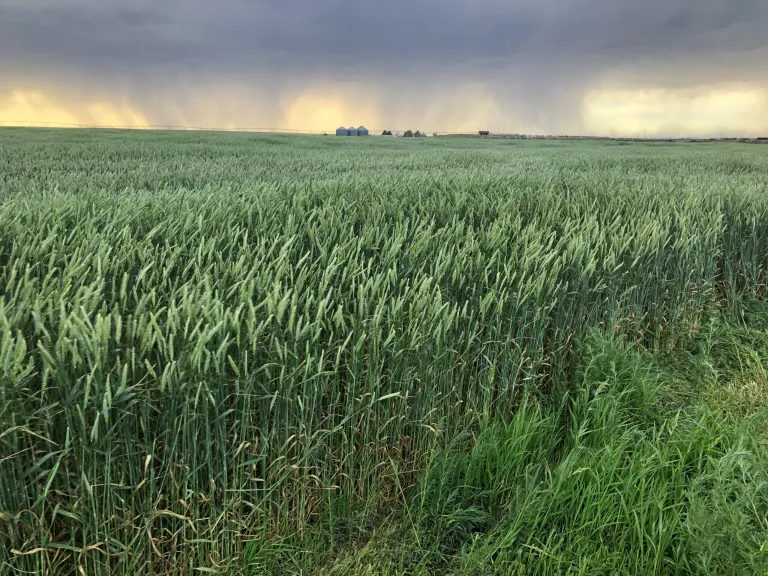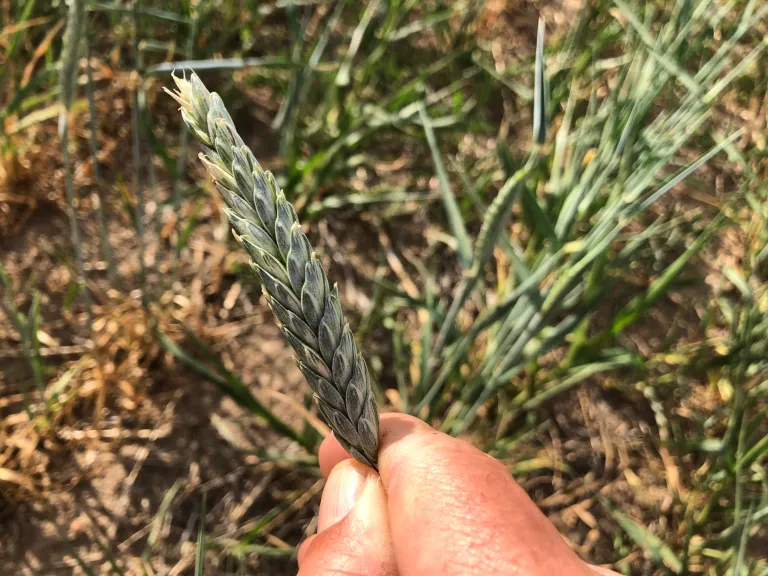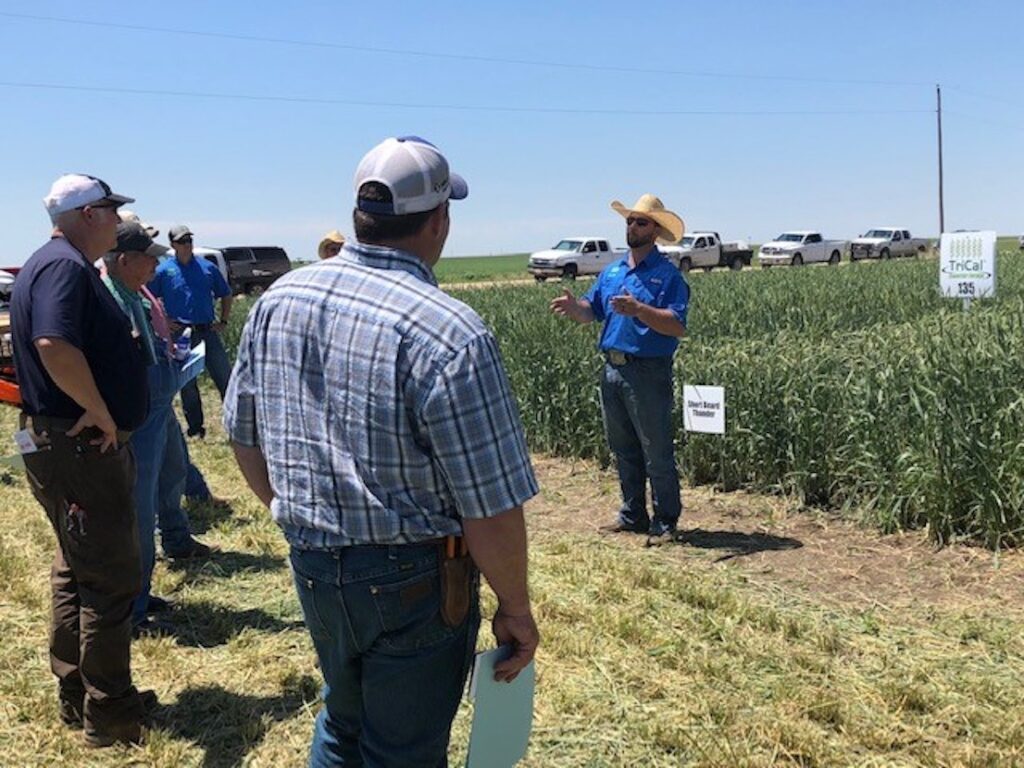Racey Padilla sees a lot of misconceptions around triticale. Much of it due to bad experiences farmers had with the crop years ago.
But the triticale that Racey is breeding today is nothing like it used to be. Farmers can rely on TriCal(R) Superior Forage to do exactly as its name says — produce high-yielding, high-quality forage that’s ideal for silage or grazing. All thanks to the efforts that Racey has put into the program over the past 7 years.
Personal Passion for Triticale
Racey’s interest in triticale began in 2010, when he participated in a new plant breeder development program through Syngenta. While the breeding facility was predominantly focused on wheat, it also had triticale, and the crop piqued Racey’s interest.
“As a livestock guy in general, I took a keen eye to triticale and how much biomass it was producing,” he says, and began working with it every chance he had. “It’s a unique crop that’s tough to work with and it’s always constantly humbling you every year.”
So when Northern AgriBrands bought the triticale program from Syngenta in 2015, Racey jumped at the opportunity to work with triticale full-time.
He first went to California to work on the spring triticale program before returning to Texas in 2016 to take over as the Small Grains Research Director of the largest triticale breeding program in North America.

Breeding for Cold Tolerance and Feed Quality
One of the first goals Racey set in his breeding efforts was to improve triticale’s cold tolerance. At the time, the triticale program was heavily focused on the southern part of the U.S. and the crop wasn’t very winter hardy. He knew that even if a variety had been performing well for a northern grower, all it took was one bad winter to keep them from using it again.
So Racey started testing more up north and “got pretty harsh on the material,” he says. “If they even look like they’re a problem, they’re gone.”
That process paid off. Racey has bred a variety with a cold tolerance that can stand even the harshest winter environments.
“As long as you can grow plants there, you can grow this variety,” he says.
In addition to cold tolerance, Racey also focuses on improving the overall feed quality, specifically the NDF, ADF, relative feed and TDN values, and digestibility. His goal is to help farmers avoid the “summer slump,” a phenomenon where cattle tends to gain and produce less because they don’t feel like eating as much in the summer heat.
“We see when we add triticale to the ration, a lot of dairies are seeing the summer slump disappear,” Racey says. “Even though they’re eating less, they’re getting a higher value of what they’re eating.”
Farmer-First Perspective
Racey understands firsthand the challenges that farmers face when it comes to feeding livestock. He grew up rodeoing and his resume includes experiences like caring for 1,000 head of mother cows as well as working for a small feedlot. Today he has his own 80-acre farm where he raises commercial hair sheep for the lamb meat market.
So when it comes to breeding triticale, Racey’s perspective is always through the lens of a farmer.
“I’ve got all the plant breeding knowledge I could possibly want, but I still think like a farmer,” he says.
That’s evident in the fact that just like farmers, he spends much of his time in the fields.
“I’m constantly in the field and letting the environment and genotypes tell me where they fit.”
Racey has five unique markets to serve — California and Arizona, the Great Plains, the Northeast, the Southeast and what he calls the “True North,” which spans from Wyoming into the Dakotas, Canada, Wisconsin and a little bit of Nebraska — so he has to be very strategic and mindful about where he tests and breeds material. And he won’t release a variety until he has all of the right information.
He’s also diligent about keeping the varieties pure. If they start “having some ugly-looking heads,” he restarts the purity process.

Future Efforts Still Focused on Triticale
The next step for the breeding program is releasing hybrids. Right now there are some available for the southern U.S., but Racey is working on developing a better hybrid to fit a larger market and will have the cold tolerance to perform well up north.
But the focus has, and always will be, on creating triticale that will provide the best forage possible. That combined with Racey’s patience and high standards for quality is what makes TriCal Superior Forage unique.
“I don’t know if anyone is spending the amount of money on breeding triticale that we are,” Racey says. “That’s our bread and butter, that’s what makes TriCal, Trical. It’s the focus on triticale.”
